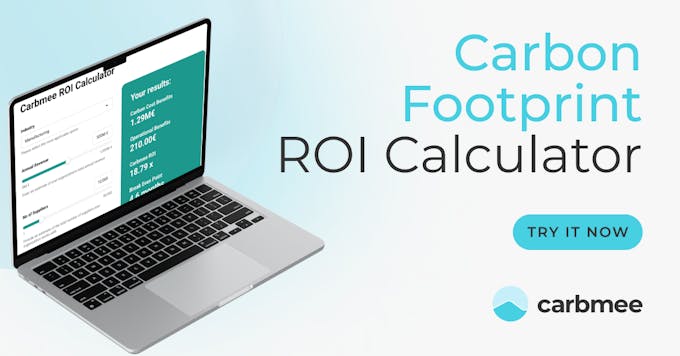What is a Product Carbon Footprint?
A Product Carbon Footprint encompasses the total greenhouse gas emissions produced during a product's lifecycle—from raw material extraction and manufacturing to distribution, usage, and eventual disposal. By calculating the PCF, businesses can identify emission hotspots, implement targeted reduction strategies, and transparently communicate their environmental performance to stakeholders.
The Importance of PCF in Today's Market
Several factors underscore the significance of PCF assessments:
- Regulatory Compliance: Governments worldwide are enacting stricter environmental regulations. In the European Union, initiatives like the Carbon Border Adjustment Mechanism (CBAM) require companies to disclose and manage their carbon emissions. Accurate PCF calculations are essential for compliance and to avoid potential penalties.
- Consumer Demand: Modern consumers are increasingly prioritizing sustainability. Products with lower carbon footprints are more attractive, influencing purchasing decisions and fostering brand loyalty.
- Competitive Advantage: Companies that proactively manage and reduce their PCFs can differentiate themselves in the marketplace, appealing to both consumers and investors who value sustainability.
Calculating and Reporting PCF
Accurate PCF calculation involves several key steps:
- Defining Boundaries: Determine the scope of the assessment, including all relevant stages of the product's lifecycle.
- Data Collection: Gather data on energy consumption, material usage, transportation, and other factors contributing to emissions.
- Emission Calculation: Utilize standardized methodologies, such as ISO 14067, to quantify emissions associated with each lifecycle stage.
- Reporting: Compile the findings into a comprehensive report, ensuring transparency and adherence to reporting standards.
For a detailed guide on this process, refer to our Step-by-Step Guide to Calculating and Reporting PCF.
Challenges in PCF Implementation
Implementing PCF assessments can present challenges, including:
- Data Availability: Accessing accurate and comprehensive data across the supply chain can be difficult.
- Complex Supply Chains: Globalized supply chains add layers of complexity to emission tracking.
- Resource Intensive: Conducting thorough PCF assessments requires time and expertise.
To learn more about overcoming these obstacles, explore our article on Overcoming Challenges in PCF Implementation.
Carbmee’s EIS™: Streamlining PCF Assessments
At Carbmee, we recognize the complexities of PCF calculations and offer the Environmental Intelligence System (EIS™) to simplify the process. EIS™ integrates seamlessly with existing data systems, automates data collection, and provides real-time analytics, enabling businesses to:
- Enhance Accuracy: Reduce errors through automated data processing.
- Save Time: Accelerate the assessment process, allowing for timely decision-making.
- Ensure Compliance: Stay aligned with evolving regulations and reporting standards.
Impact on Supply Chain Efficiency
Analyzing PCFs extends beyond individual products; it offers insights into the entire supply chain. By identifying emission-intensive processes and suppliers, companies can:
- Optimize Operations: Implement more efficient practices to reduce emissions.
- Enhance Transparency: Build trust with stakeholders through clear communication of environmental efforts.
- Foster Collaboration: Work with suppliers to achieve mutual sustainability goals.
For practical examples, read our Supply Chain Efficiency Through PCF Analysis.
Future Trends in PCF Measurment
The landscape of PCF is continually evolving, with emerging trends such as:
- Advanced Technologies: Integration of AI and machine learning to enhance data analysis and predictive capabilities.
- Standardization: Development of universal standards to ensure consistency in PCF assessments.
- Increased Accountability: Growing emphasis on third-party verification and certification of PCF reports.
Stay informed about these developments in our article on The Future of PCF: Trends and Opportunities.
How Product Carbon Footprints, Lifecycle Assessments, and Eco-Friendly Design Drive Sustainable Transformation
A Product Carbon Footprint (PCF) is not just a reporting measure—it is a crucial tool for making informed decisions that reduce environmental impact and drive sustainable transformation. By integrating PCFs with Lifecycle Assessments (LCAs) and eco-friendly design principles, businesses can actively lower their emissions, optimize resource use, and create products with sustainability at their core. Here’s how these approaches help in driving meaningful change:
1. Product Carbon Footprints (PCFs) Enable Data-Driven Decision Making
- PCFs provide quantifiable data on emissions across the entire product lifecycle, from raw material extraction to end-of-life disposal.
- They help businesses identify carbon hotspots in supply chains, manufacturing processes, and logistics.
- By measuring Scope 1, 2, and 3 emissions in compliance with GHG Protocol and ISO 14067, PCFs ensure consistency, transparency, and regulatory alignment.
2. Lifecycle Assessments (LCAs) Support Holistic Environmental Evaluation
- LCAs go beyond carbon footprints to assess broader environmental impacts, including water use, land degradation, and resource depletion.
- They enable companies to compare different product designs and manufacturing methods, ensuring the most sustainable choices are made.
- With automated tools, businesses can scale LCAs across product lines, making sustainability evaluation an integrated part of operations.
3. Eco-Friendly Design Minimizes Environmental Impact from the Start
- Incorporating sustainability early in the product development process ensures optimal material selection, recyclability, and energy efficiency.
- Using simulation tools helps explore different design scenarios, reducing waste and improving environmental performance.
- Eco-conscious design not only lowers emissions but also enhances circular economy efforts, such as material reuse and product longevity.
Conclusion
Understanding and managing Product Carbon Footprints are vital for businesses committed to sustainability. By leveraging tools like Carbmee’s EIS™, companies can navigate the complexities of PCF assessments, achieve compliance, and gain a competitive edge in the market.
![[object Object]](https://images.prismic.io/carbmee/Z6y5eZbqstJ9-iBA_PCF-2--2-.png?auto=format,compress)



